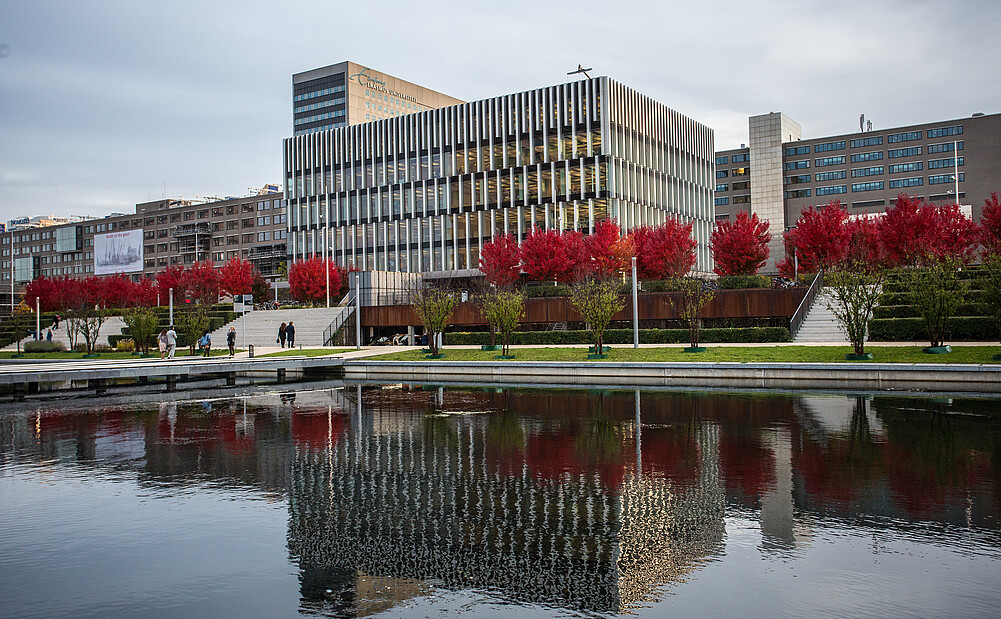

Article: Thursday, 27 November 2025
People are quick to notice discrimination by gender or race – and condemn it – but they often fail to notice equally strong discrimination based on physical attractiveness. A new study shows this ‘blind spot’ makes biases in favour of beauty seem acceptable, that is, until it’s pointed out. The findings came in research published by Dr Johannes Boegershausen and Dr Gabriele Paolacci of Rotterdam School of Management, Erasmus University (RSM) and lead author Dr Bastian Jaeger of Tilburg University. Titled Social bias blind spots: Attractiveness bias is seemingly tolerated because people fail to notice the bias, it recently appeared in the Journal of Personality and Social Psychology.
To address discrimination, first you have to detect it, and that’s true for individuals and for society. Yet discrimination is often difficult to recognise, which is why people frequently look for it, for example in disproportional representation of certain groups. There are several examples of this that have made headlines and trended on social media – such as the #OscarsSoWhite controversy in 2015 and the all-male panels (#manels) at the World Economic Forum and academic conferences.
The researchers were intrigued by the possibility that other forms of bias may receive less attention simply because they’re not noticed. If attractiveness bias flies under the radar, it can systematically shape hiring, pay, and evaluations without triggering objections or safeguards.
Gabriele Paolacci said: “People are less OK with beauty bias than they seem. When you point to the bias, they do object to it.”
The researchers conducted several experiments in hiring and court sentencing contexts, comparing equally sized gender, race, and attractiveness biases to situations in which there was no bias.
People were asked to rate these selections in terms of fairness. The researchers found that selections that were biased on race and gender were judged as clearly less fair than unbiased selections, but this was less true for selections based on physical attractiveness.
The researchers summed up their findings:
People can easily see and condemn gender and race bias, but often fail to notice attractiveness bias.
Bias is considered more acceptable when it favours attractive people.
But ‘acceptable bias based on attractiveness’ is not a genuine form of approval. “When we pointed out the attractiveness bias, participants quickly stopped thinking it was fair. People mostly hadn’t noticed the bias was there,” said the researchers.
The researchers also tested whether the apparent ‘tolerance’ for an attractiveness bias was genuine. Was it because people thought it was legitimate to hire based on looks? Or was it because of a failure to notice a bias towards attractiveness?
“While we found some evidence that people view attractiveness-based decisions as more legitimate than those based on race or gender, we also found support for our idea that people fail to notice it in the first place,” said the researchers. “Specifically, we found that making the bias more salient strongly decreased the number of participants who thought it was fairer to select based on attractiveness than on race.”
Even though it might cause embarrassment or awkwardness, the researchers hope that there can be ways to make sure that attractiveness bias is detected so it can be reduced. They later brainstormed ways to make unnoticeable biases more obvious in the design of processes. For example:
Add a short ‘salience prompt’ at the top of hiring or performance forms, asking ‘Check: are we rewarding looks or presentation over job-relevant criteria?’
In training sessions and programmes for diversity, equity and inclusion, (DEI), make sure to include less typical forms of bias, such as physical attractiveness, alongside more typical ones.
In meetings, bring up the subject of appearance in discussions and conversations about other biases, such as race or gender, alongside these other biases.
Start social movements that campaign on behalf of less physically attractive people.
Other methods, including reducing or eliminating visual cues in the selection process and standardising evaluation processes, might apply to more noticeable forms of discrimination too.
The researchers say that helping organisations to identify where biases have been allowed to go unchecked spreads the efforts of making things fair beyond the obvious categories of race and gender. It also shows that some discriminations persist because they’re invisible. “By helping decision-makers and institutions notice and address beauty bias, we can promote fairer access to jobs, pay, and justice, and that improves trust and legitimacy,” said Johannes Boegershausen.

Tilburg University


Read the full paper in theJournal of Personality and Social Psychology (Attitudes and Social Cognition): Social bias blind spots: Attractiveness bias is seemingly tolerated because people fail to notice the bias.


Science Communication and Media Officer
Rotterdam School of Management, Erasmus University (RSM) is one of Europe’s top-ranked business schools. RSM provides ground-breaking research and education furthering excellence in all aspects of management and is based in the international port city of Rotterdam – a vital nexus of business, logistics and trade. RSM’s primary focus is on developing business leaders with international careers who can become a force for positive change by carrying their innovative mindset into a sustainable future. Our first-class range of bachelor, master, MBA, PhD and executive programmes encourage them to become to become critical, creative, caring and collaborative thinkers and doers.
